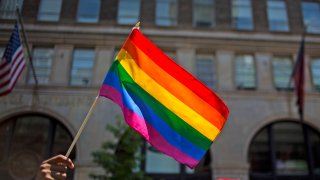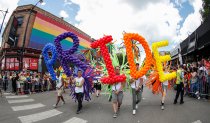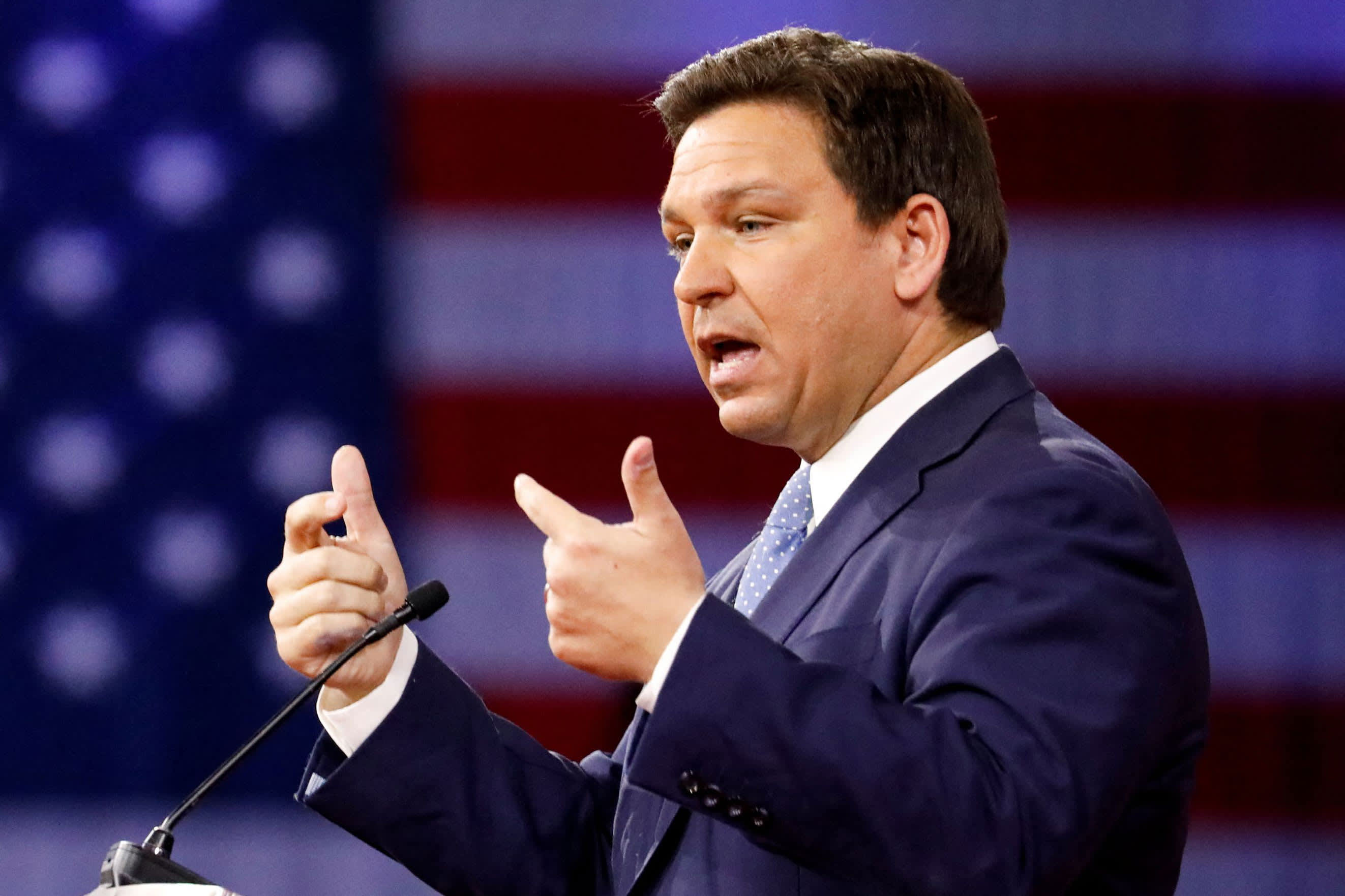
June is Pride Month, inspiring a host of events around the world.
But what is Pride Month exactly? The rainbows and glitter may catch your eye, but the month-long celebration is really a call for greater unity, visibility and equality for the LGBTQ community. And while it's a time to look toward a fairer, kinder future, it's also a moment to recognize all of the advances — and setbacks — in the last few decades.
"The number and variety of Pride events throughout the country and the world reflect the diversity of the LGBTQ community both in the United States and abroad,” GLAAD writes on their website. That said, Pride celebrations can last anywhere from several days to a full week, and they often include marches, speeches, outdoor festivals, concerts, performances and workshops.
Below, we've answered all of your top questions about Pride Month, including why it's celebrated in June and how the rainbow flag came to be a universal symbol of solidarity.
Get top local stories in Philly delivered to you every morning. >Sign up for NBC Philadelphia's News Headlines newsletter.
More LGBTQ+ Coverage:
What is Pride Month?
Pride Month celebrates LGBTQ culture, achievements and activism through a series of organized activities, including film festivals, art exhibits, marches, concerts and other programs.
Through these efforts, the LGBTQ community and its allies also aim to increase awareness over ongoing issues of inequality as well as commemorate the lives lost to hate crimes and HIV/AIDS.
Why is Pride Month in June?
Pride Month is observed in June to honor the anniversary of the Stonewall Uprising, a touchstone event in LGBTQ history that laid the foundation for Pride.
In the late 1960s, being openly gay was largely prohibited in most places. New York, in particular, had a rule that the simple presence of someone gay or gender queer counted as disorderly conduct, effectively outlawing gay bars.
On June 28, 1969, patrons of the Stonewall Inn, a popular bar with a diverse LGBTQ clientele, stood their ground after police raided the establishment. The resulting clash led to days of riots and protests, known as the Stonewall Uprising.
One year later, on the anniversary of the Stonewall Uprising, thousands of people flooded the streets of Manhattan in the Christopher Street Gay Liberation Day March, regarded as the first gay pride event ever.

How did Pride Month begin?
Pride Month had humble beginnings: It initially began as Gay Pride Day, observed annually on the last Sunday in June.
As awareness increased, more activities and events were planned throughout the month and eventually, it evolved into the month-long observance, aptly named Pride Month.
In 1999, President Bill Clinton officially declared June as Gay and Lesbian Pride Month, setting aside the month as a time to recognize the LGBTQ community’s achievements and support the community.
What is the Pride symbol?
The rainbow flag is universally recognized as the symbol for LGBTQ pride. Created by Gilbert Baker, a renowned San Francisco activist, the flag was flown for the first time at the 1978 San Francisco Gay Freedom Day celebration.
According to Baker, what inspired him about the rainbow was that it represented all the genders, races and stands for “the rainbow of humanity.” Each of the six colors of the rainbow flag represent a different aspect of the LGBTQ movement including life, healing, sunlight, nature, serenity and spirit.
To some, the rainbow flag also signifies power, rebellion and hope.
In 2017, Philadelphia added a black and brown stripe to their flag to symbolically represent LGBTQ people of color who have often felt marginalized from their own community. Today, many organizations have adopted that flag, also adding the colors of the transgender pride flag — baby blue and light pink — to represent that community as well.
How can I celebrate Pride Month?
Each year, dozens of celebrations and marches are held around the world during Pride Month.
One of the largest celebrations happens in New York City, the birthplace of modern gay rights movement. The NYC Pride parade, which is held on June 26 this year, is the country's biggest Pride Month parade, with roughly 2 million attending in 2018.
Here’s a list of other notable U.S. Pride Month events happening this year:
Los Angeles: June 11 - 12, 2022
Chicago: June 25 - 26, 2022
San Francisco: June 25 - 26, 2022
New Orleans: June 9 - 12, 2022
Provincetown, MA: June 3 - 5, 2022
Philadelphia: Sunday, June 5, 2022
Nashville, TN: June 25 - 26, 2022
Key West, FL: June 1 - 5, 2022

LGTBQ Pride Month resources
To learn more about Pride Month or find additional ways to get involved, check out the following resources:
- GLAAD, a non-government agency founded to promote LGBTQ acceptance along with identifying and preventing discrimination against lesbian, gay, bisexual, transgender and queer individuals.
- GLSEN, a network of students, families and education advocates working to facilitate LGBTQ safety and support in schools.
- The Equality Federation is a LGBTQ advocacy group working to help advance the rights of LGBTQ people.
- The National LGBTQ Task Force, an advocacy group dedicated to advancing freedom, justice and equality for LGBTQ people.
- The Library of Congress, for history on lesbian, gay, bisexual, transgender and queer Pride Month.
- The Anti-Defamation League, an anti-hate organization dedicated to fighting bias, extremism, discrimination or hate.
- The American Civil Liberties Union, works to preserve and defend the rights and liberties of U.S. citizens.
This story first appeared on TODAY.com. More from TODAY:



